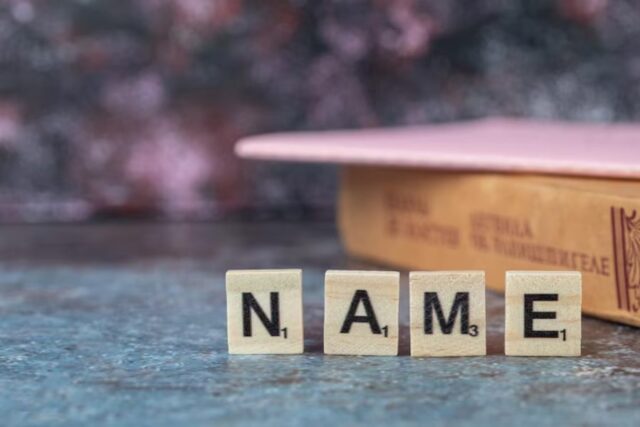In a world where surnames define family ties, lineages, and legal identities, it’s natural to wonder: does the royal family have a last name? Unlike the average citizen, the British monarchy doesn’t strictly follow traditional naming conventions. Their unique heritage and status in society have long blurred the lines between titles and surnames. This article dives deep into the royal family’s name practices, historical background, and the modern usage of their official surname.
When Queen Elizabeth II ascended the throne, she and Prince Philip had to determine what surname their direct descendants would carry—a conversation that led to the birth of “Mountbatten-Windsor.” But does every member of the royal family use it? And how did we get from centuries of monarchs identified only by title to a generation that occasionally needs a legal last name?
Whether you’re curious about royal protocols or need answers for genealogical curiosity, this comprehensive guide will answer the question, does the royal family have a last name?—using clear outlines, rich history, and modern-day examples.
Does the royal family have a last name?
Yes, but it’s not always used. The royal family’s official surname is Mountbatten-Windsor, adopted in 1960 for descendants of Queen Elizabeth II and Prince Philip. However, royals often use titles instead of surnames.
The Royal Family and the Concept of Surnames
The question does the royal family have a last name is more complex than it appears. In today’s society, surnames are essential for tracking family heritage, legal identification, and social structure. However, British monarchs have historically operated differently. Traditionally, they were known solely by their first names and regnal numbers—such as Elizabeth II or George VI—without needing a surname. Their titles alone carried authority and identity.
This changed with Queen Elizabeth II’s marriage to Prince Philip. Philip’s surname was Mountbatten, while Elizabeth belonged to the House of Windsor. To unify their lineage, the royal family introduced the hyphenated surname Mountbatten-Windsor in 1960 for their direct descendants. Interestingly, some refer to this as a Cute Name for the royal line, blending legacy with a personal touch.
Despite the official surname, it’s not universally used. For example, Prince William once went by “William Wales,” adopting his father’s title as a stand-in last name. So, does the royal family have a last name? Technically yes—but in practice, the use of surnames remains optional and steeped in tradition.
When and Why the Royal Family Uses Last Names
Although members of the British royal family are primarily known by their titles, there are specific circumstances where a legal surname becomes necessary. These situations highlight how tradition adapts to modern formalities.
Legal Identification Purposes
While most royal family members are known by their titles in public life, legal systems still require surnames. For documents like passports or official registrations, members of the British royal family—especially younger generations—use the surname Mountbatten-Windsor, which combines Queen Elizabeth II’s royal house with Prince Philip’s family name.
School and Military Settings
In more informal or structured institutions like schools or the military, royals often adopt a practical last name. Prince William and Prince Harry, for example, went by “William Wales” and “Harry Wales,” borrowing from their father’s title, Prince of Wales. This simplified their identity among peers while preserving royal tradition.
Differentiating Non-Ruling Members
Royals who are not directly in line for the throne sometimes use a surname when performing non-official tasks. This helps them distinguish themselves in settings where a title might seem excessive or confusing.
Marriages and Birth Registrations
When it comes to legal events like marriages or the birth of children, the use of a surname becomes necessary. Mountbatten-Windsor is typically the name recorded on certificates and government documents.
Public and Media References
Though the media usually refers to royals by title or first name, formal reports, legal cases, or biographical entries may include their surname, especially when clarity is required.
Synonyms and Terms Used Instead of Royal Surnames
When asking does the royal family have a last name, it’s important to understand that while they rarely use traditional surnames, they do rely on a variety of substitutes that serve a similar purpose in different contexts.
- House of Windsor: This term refers to the royal family as a whole and is often used in place of a surname in historical or formal references.
- Mountbatten-Windsor: The official surname designated for the descendants of Queen Elizabeth II and Prince Philip, typically used in legal documentation.
- Titles as Surnames: Members of the royal family, like Prince William or Prince Harry, have used titles such as “Wales,” “Sussex,” or “York” in school or the military.
- Royal Styles (Prince/Princess): Formal styles like “Prince” or “Princess” often replace the need for a last name in official capacities.
- Regnal Titles: Monarchs are identified by their ruling name and number—e.g., Elizabeth II—instead of a surname.
- Given Names Only: In many social or media settings, royals are casually referred to by first name alone, such as “William” or “Harry.”
These alternatives fulfill the function of surnames while maintaining royal tradition.
A Historical Look at Royal Names and Dynasties
The concept of surnames in royalty dates back to the formation of dynasties. Before the 20th century, British monarchs were associated with their royal houses, such as the House of Tudor or House of Stuart. Last names weren’t necessary because lineage was traced through titles and territories.
In 1917, during World War I, King George V officially changed the royal house name from the House of Saxe-Coburg and Gotha to the House of Windsor to avoid German associations. This was the first modern shift toward defining the royal family with a British-sounding name. Still, it wasn’t a surname in the traditional sense.
Queen Elizabeth II later modified this structure when her children needed an official last name. The royal family entered a new era where surnames began to hold more legal weight, although they remain largely unused in public life.
This evolution shows that asking does the royal family have a last name? is really asking how a monarchy adapts ancient customs to modern expectations.
When the Royal Family Uses Surnames and Why It Matters
While most members of the British royal family are publicly known by their titles, there are structured rules behind their surname usage. Here’s a closer look:
- The Role of Mountbatten-Windsor: Established in 1960, this surname combines Queen Elizabeth II’s royal house (Windsor) and Prince Philip’s family name (Mountbatten). It applies primarily to their direct descendants.
- How Titles Act as Substitutes: In many practical situations, royals use titles in place of last names. For example, Prince William was known as “William Wales” during his time in the military, based on his father’s title.
- Public vs. Private Naming: While public appearances emphasize royal titles, last names like Mountbatten-Windsor are used for legal documentation, passports, and registrations.
- Who Uses It and Who Doesn’t: Not all royals adopt the surname. It’s generally reserved for those in the Queen’s direct line, especially when a surname is required.
- Naming Rules for Future Generations: As the monarchy continues to modernize, future royals may retain, adapt, or revise surname usage based on both legal needs and evolving traditions.
Final Thoughts
The question does the royal family have a last name isn’t easily answered with a simple yes or no. While the official surname Mountbatten-Windsor was adopted in 1960, its use is limited and situational. Most royals are recognized by their titles or house names rather than traditional surnames. This unconventional approach to naming highlights the monarchy’s unique position—anchored in centuries of custom yet adaptable to modern expectations.
A last name isn’t necessary for identity when royal heritage and public roles speak louder. Still, when legal documentation or modern life demands it, the royal surname is there—quietly serving its purpose without ever taking center stage. In essence, their name is both symbolic and strategic.
FAQ’s
Does the royal family have a last name?
Yes, their official surname is Mountbatten-Windsor, adopted in 1960 and used when legally necessary, particularly by descendants of Queen Elizabeth II and Prince Philip.
Why don’t they use it publicly?
Royals typically use titles such as Prince, Princess, or Duke in public life, making surnames unnecessary for identification in most formal and ceremonial settings.
Do all royals use Mountbatten-Windsor?
No, this surname is primarily used by Queen Elizabeth II and Prince Philip’s descendants, while other royals often rely on titles or house names instead.
What did royals use before this surname?
Before Mountbatten-Windsor, royals were identified by dynastic house names like Windsor, Tudor, or Stuart, or simply by their first names and titles.
Is the royal surname used on legal documents?
Yes, the surname is required for official paperwork such as marriage certificates, military records, and any formal identification involving legal documentation.














